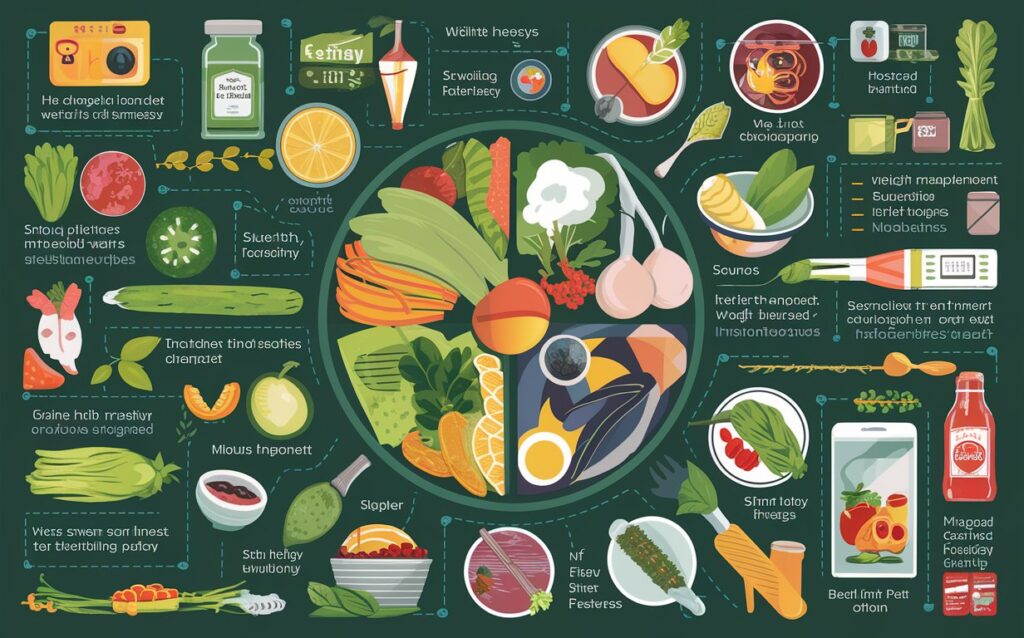Eating healthy every day can feel like a luxury. But it doesn’t have to break the bank. Want to learn how?
In this, we’ll share tips on budget-friendly healthy meals.
Get ready to discover affordable ingredients and simple recipes.
Your journey to tasty, healthy eating starts now!
Introduction

Eating healthy is essential for overall well-being, but it doesn’t have to the bank. By cooking budget-friendly meals at home, you can nourish your body without straining your wallet. In this blog post, we will explore the importance of healthy eating, the benefits of budget-friendly meals, and practical tips to help you achieve a nutritious yet cost-effective diet.
Importance of Healthy Eating
Maintaining a balanced diet rich in nutrients is crucial for optimal health. Consuming a variety of fruits, vegetables, lean proteins, and whole grains can immunity, improve energy levels, and reduce the risk chronic diseases.
Benefits of Budget-Friendly Meals
Cooking at home allows you to control the ingredients used in your meals, leading to healthier choices. Additionally, preparing budget-friendly meals can help you save money in the long run and reduce food waste.
Planning Your Meals
Weekly Meal Planning
Planning your meals for the week ahead can save you time and money. Consider creating a meal schedule, taking into account your dietary requirements and preferences.
Making a Shopping List
Before heading to the grocery store, make a detailed shopping list based on your meal plan. This will help you avoid impulse purchases and ensure you only buy what you need.
Prioritizing Essential Items
When creating your shopping list, prioritize essential items such as proteins, grains, and produce. Stock up on pantry staples that have a long shelf life to minimize frequent trips to the store.
Smart Grocery Shopping
Buying in Bulk
Purchasing items in bulk can be cost-effective in the long term. Consider buying non-perishable goods, like grains and canned goods, in larger quantities to save money.
Choosing Generic Brands
Opting for generic or store-brand products can significantly reduce your grocery bill. Generic brands often offer similar quality as name brands at a lower cost.
Seasonal Fruits and Vegetables
Buying seasonal produce is not only environmentally friendly but also budget-friendly. Seasonal fruits and vegetables are often more affordable and fresher than out-of-season varieties.
Budget-Friendly Ingredients
Affordable Proteins
Incorporate cost-effective proteins such as beans, lentils, eggs, and canned tuna into your meals. These options are nutritious and versatile, providing essential nutrients without breaking the bank.
Low-Cost Grains and Legumes
Whole grains like rice, oats, and quinoa, as well as legumes like chickpeas and black beans, are affordable staples that offer fiber and protein to your diet.
Vegetables and Fruits Under Budget
Opt for frozen or canned vegetables and fruits when fresh produce is expensive. These alternatives retain nutrients and are convenient for quick and easy meal preparation.
Cooking Techniques to Save Money
Batch Cooking and Freezing
Prepare meals in batches and freeze individual portions for later consumption. This technique not only saves time but also prevents food waste by utilizing leftovers effectively.
One-Pot Meals
One-pot meals are not only convenient but also cost-efficient. Combine proteins, grains, and vegetables in a single pot to create delicious and nutritious dishes with minimal cleanup.
Using Leftovers Creatively
Transform leftovers into new dishes to minimize food waste. Repurpose proteins and vegetables from previous meals into stir-fries, salads, or wraps for a tasty and budget-friendly meal.
Easy and Affordable Recipes
Breakfast Ideas
Start your day with budget-friendly breakfast options like oatmeal with fruit, yogurt parfait, or scrambled eggs with spinach. These dishes are quick to prepare and provide energy for the day ahead.
Budget-Friendly Lunch Recipes
Prepare simple and nutritious lunches such as vegetable stir-fry with rice, turkey sandwich with whole-grain bread, or lentil soup. These recipes are filling and satisfying without breaking the bank.
Healthy Dinner Options
For dinner, consider making meals like roasted chicken with vegetables, pasta with marinara sauce, or vegetable stir-fry with tofu. These dishes are flavorful, balanced, and budget-friendly.
Tips for Storing Food
Proper Food Storage
Use airtight containers or resealable bags to store leftovers and perishable items in the refrigerator. Proper storage can extend the shelf life of food and prevent spoilage.
Maximizing Shelf Life
Organize your pantry and refrigerator to rotate older items to the front and newer items to the back. This practice helps prevent food from expiring before you have a chance to use it.
Reducing Food Waste
Get creative with meal planning to utilize all ingredients and prevent leftovers from going to waste. Use vegetable scraps to make broth or combine different leftovers for a delicious new dish.
Making the Most of Your Budget
Tracking Expenses
Keep a record of your grocery expenses to understand where your money is going. Tracking your spending can help you identify areas where you can save and adjust accordingly.
Adjusting Based on Sales
Take advantage of sales, discounts, and coupons to maximize your budget. Plan your meals around discounted items and stock up on essentials when they are on sale.
Avoiding Unnecessary Purchases
Stick to your shopping list and avoid impulse buys to stay within your budget. Focus on purchasing nutritious foods that align with your meal plan to prevent overspending.
Conclusion
In conclusion, cooking budget-friendly healthy meals every day is achievable with proper planning, smart shopping, and creative cooking techniques. By prioritizing essential items, choosing budget-friendly ingredients, and utilizing leftovers effectively, you can enjoy nutritious meals while saving money. Remember, maintaining a healthy diet doesn’t have to be costly – it’s all about making informed choices and being resourceful in the kitchen. Start your journey towards a healthier and budget-friendly lifestyle today!
Recap of Key Points
- Importance of healthy eating for overall well-being
- Benefits of budget-friendly meals for saving money
- Planning meals, smart grocery shopping, and utilizing affordable ingredients
- Cooking techniques to save money and easy, affordable recipes
- Tips for storing food, maximizing shelf life, and reducing food waste
- Making the most of your budget by tracking expenses, adjusting based on sales, and avoiding unnecessary purchases
Encouragement for the Reader
Embrace the challenge of cooking budget-friendly healthy meals and see it as an opportunity to cultivate creativity in the kitchen. With the right mindset and tools at your disposal, you can nourish your body without compromising your financial goals.
Final Thoughts on Maintaining a Healthy, Budget-Friendly Diet
Remember that investing in your health through nutritious meals is a long-term benefit that outweighs any temporary savings. By prioritizing your well-being and financial stability, you can create a sustainable and fulfilling lifestyle that supports your overall health and happiness. Start small, stay focused, and enjoy the journey to a healthier you!

